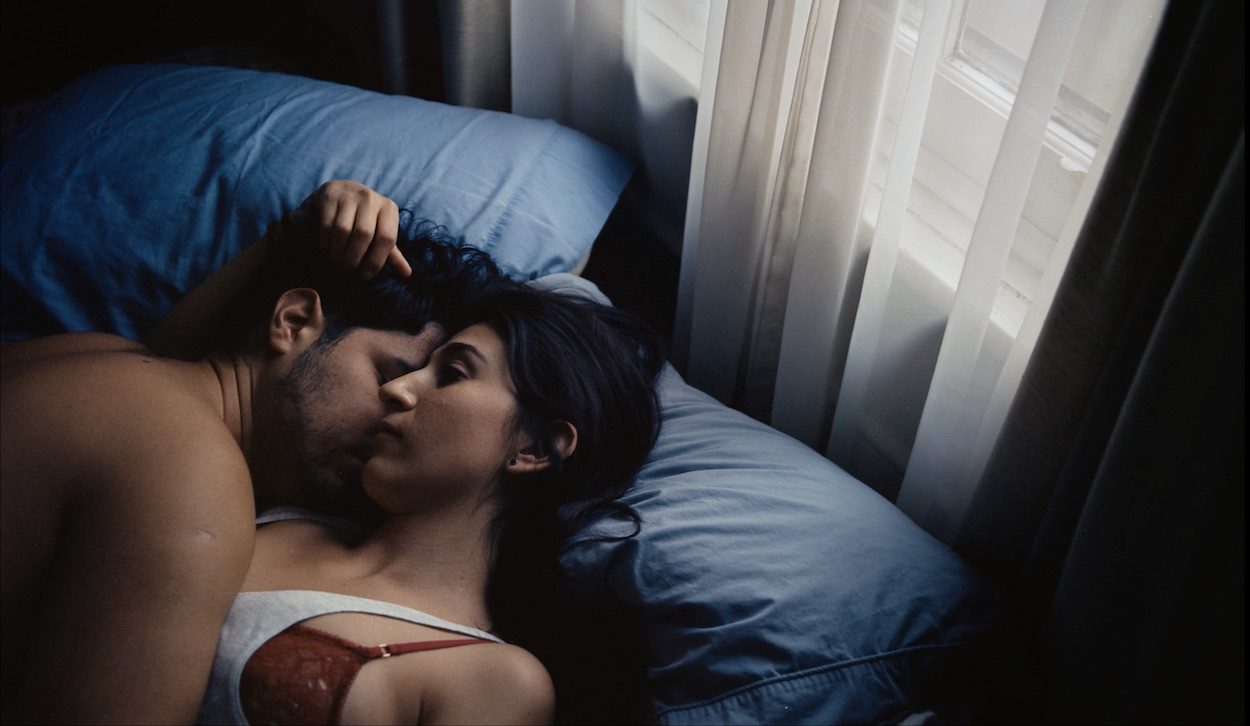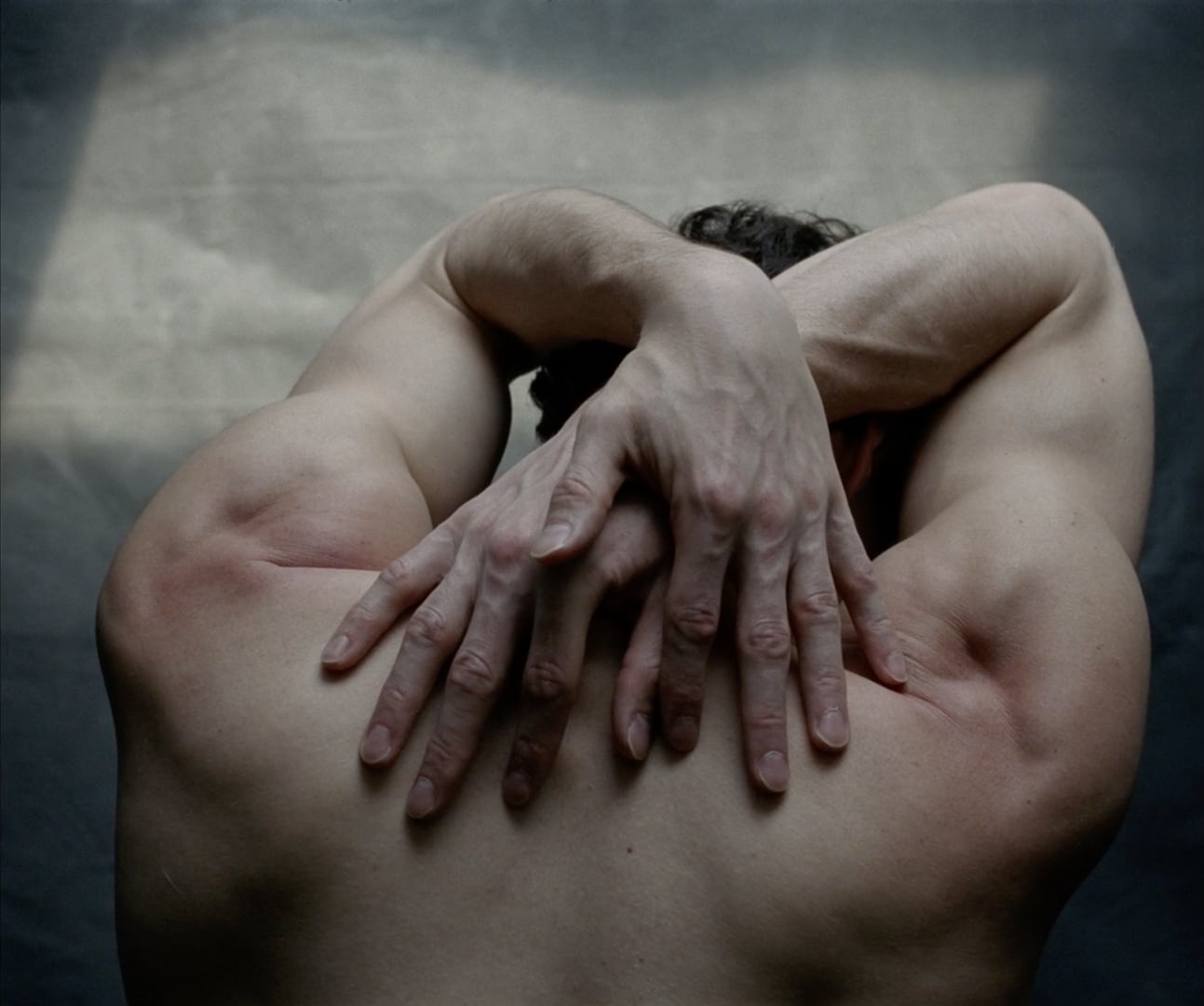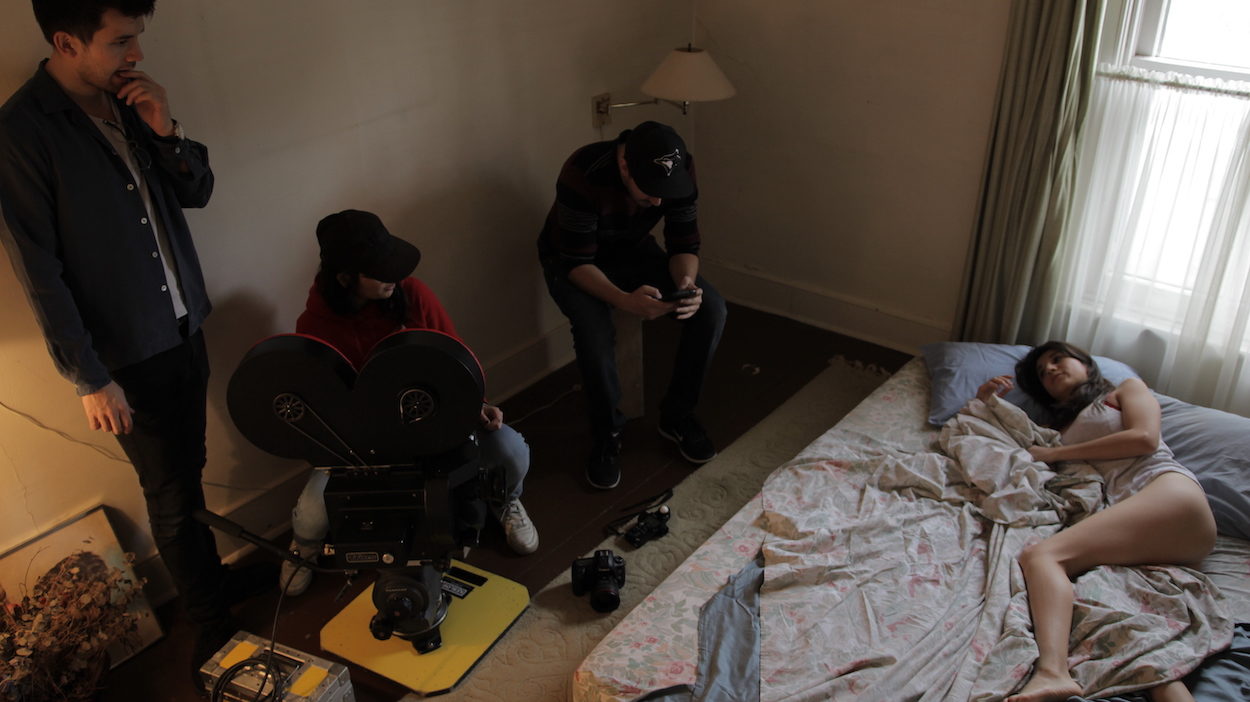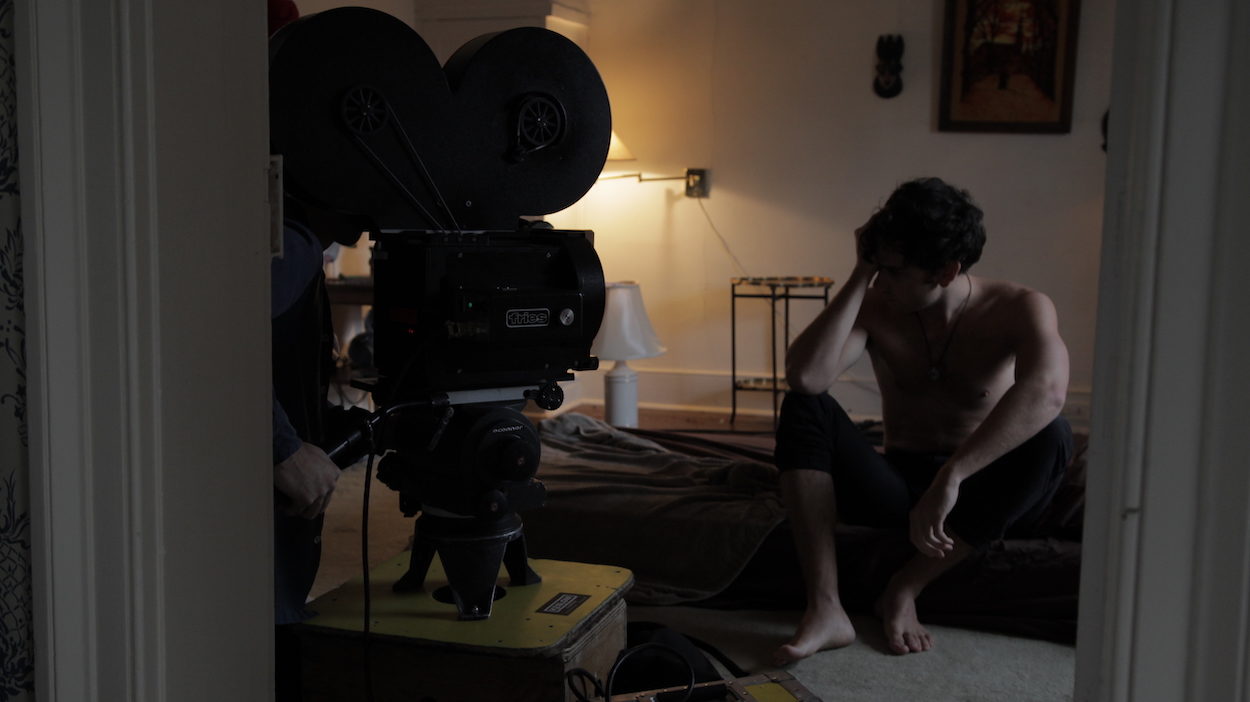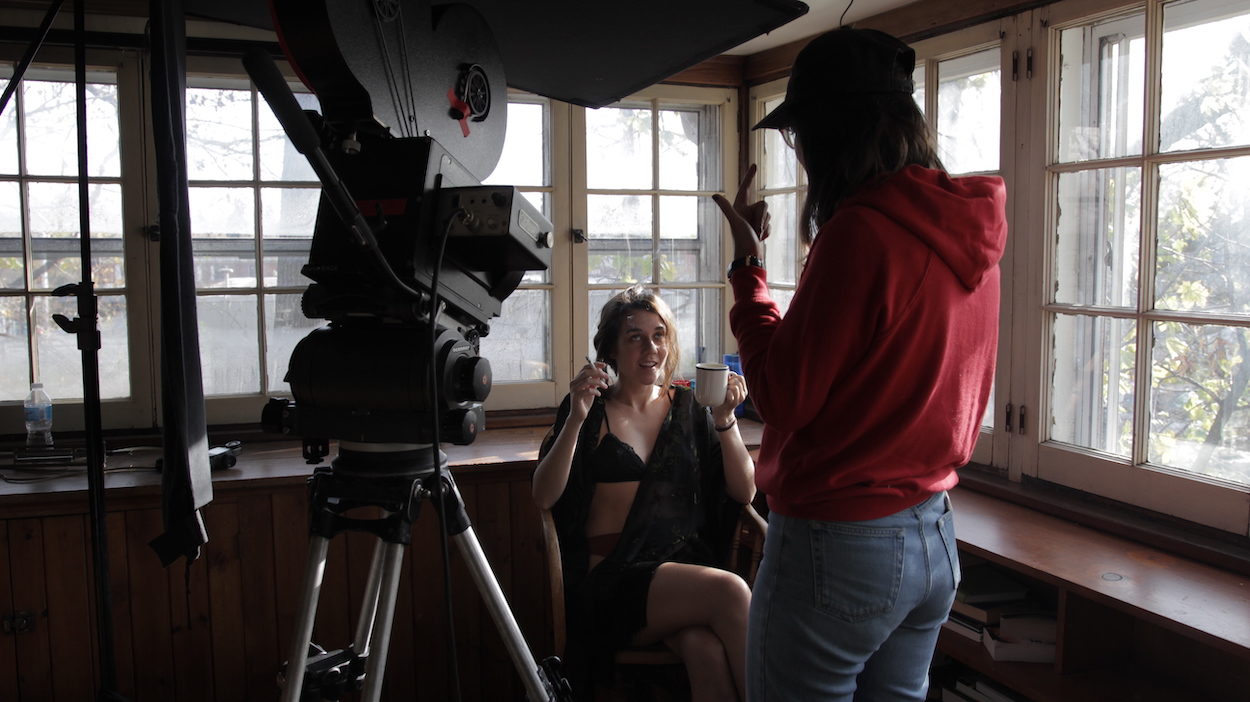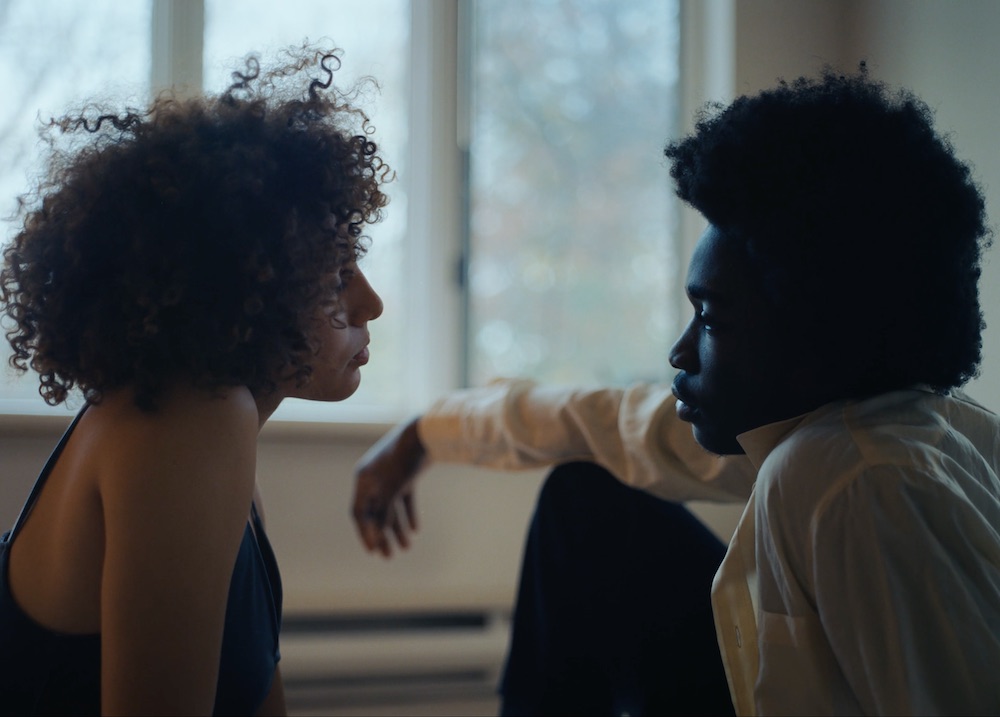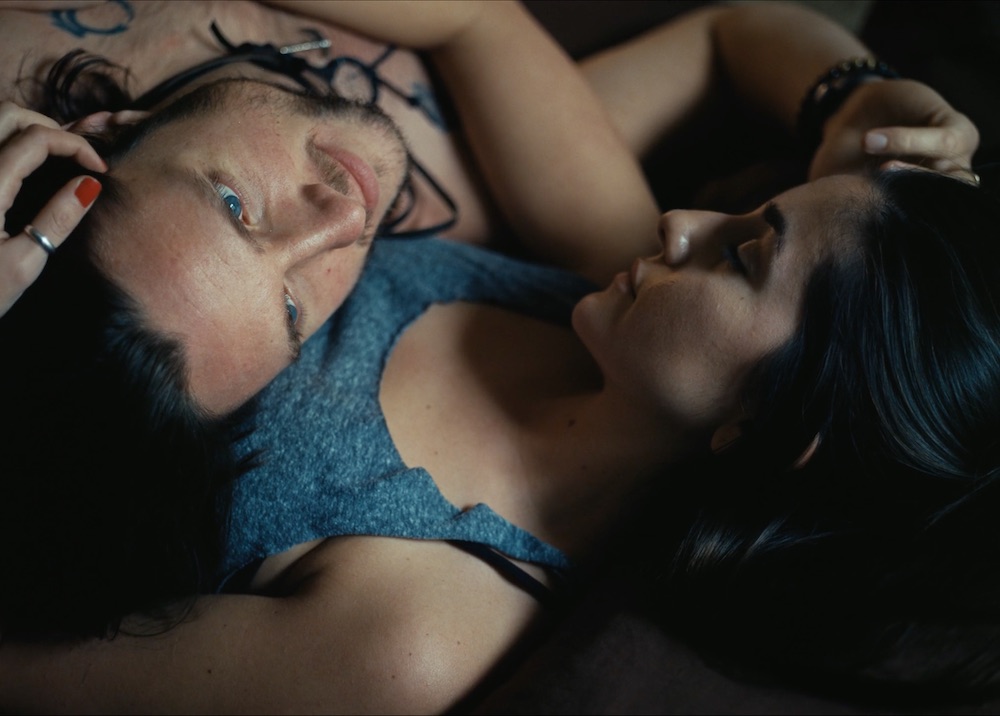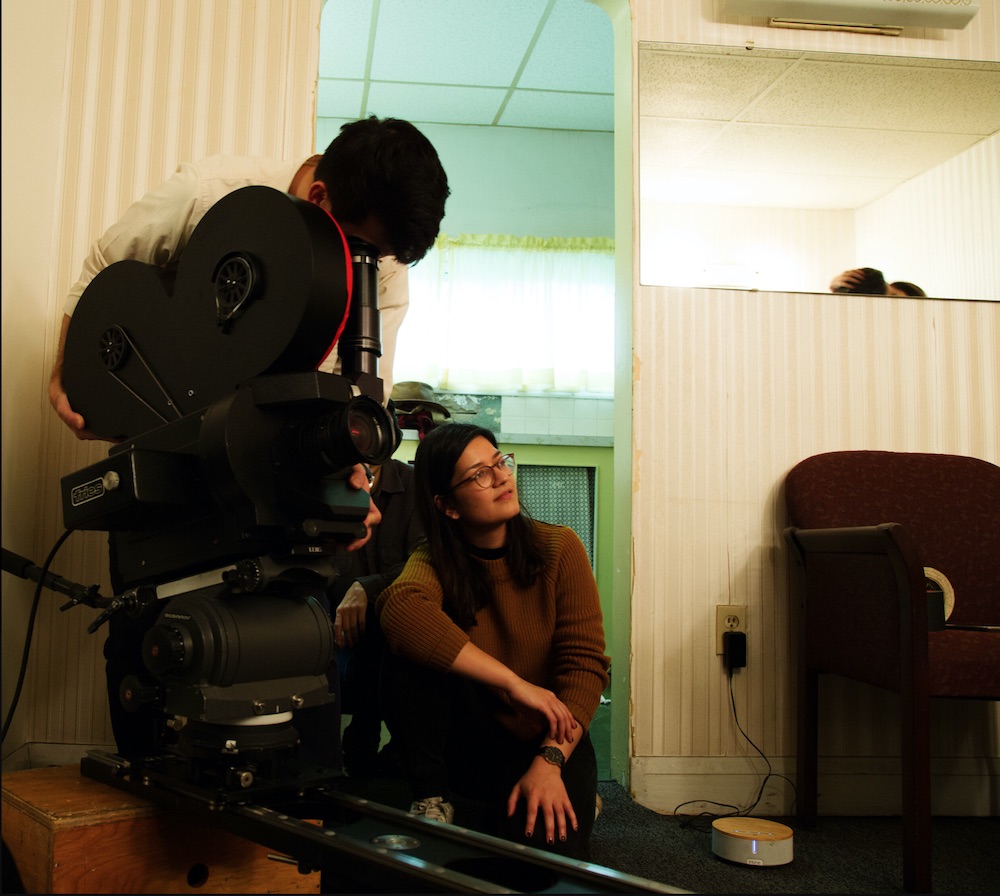The Ballad is a powerful piece that speaks of empathy and listening. What was behind your thinking when you decided to make the film?
The Ballad came from wanting to capture and explore intimacy between real couples. My partner, Christopher Lew, and I had built a collaboration shooting on 35mm film, and it had a huge influence on our visual language. We were really starting to notice something we were getting excited about and with The Ballad, we decided to push our format to 65mm and see how that would influence and affect our approach. That set the foundation for our project and we built everything from there.
There is space to breathe, the moments of wondering, between the more intimate scenes which creates the visual narrative. Did you storyboard before you began shooting?
We didn’t have storyboards, but I had a collection of images that I’d organized into a loose narrative arch and a shot list. This helped maintain a balance between intimate scenes and individual moments. Our approach was driven by the space and setting up an environment to place our cast into, scene by scene, action by action. The images would help spark inspiration and bring everyone on the same page, especially in the absence of a script or formal guidelines.
The framing and lighting are cinematic. What did you shoot it on?
We shot 65mm film on an 8-perf Mitchell Freis camera.
Did you shoot with the edit in mind? Did you edit the film yourself? Was that a tricky process – did you have to let go of a lot of footage?
I cut the film and I did have the edit in mind, but when I put the first cut together, it didn’t feel like the footage wanted to exist in that way. It’s hard to describe but the process of shooting and editing this project really felt like the format had its own influence and I had to follow its lead.
The edit was surprisingly challenging. I’d never felt at the mercy of footage like I did with The Ballad. I kept chipping away at the edit with blind faith, and one day, as I sat down for another session and played back my last cut, it was complete. It just felt complete, and I had no idea when I’d left it that way. That was among one of the most surprising and inspiring parts of this project. It never felt hopeless, in fact the opposite, it was more like, being patient enough to discover the true beauty.
As far as footage, we had about 20 minutes of footage in total. We had to let go of some incredible moments, but I think what ended up in the cut belonged together and the moments outside of it stood alone.
Please tell us about the subjects – were they all couples in life? How did you cast them?
Yes, they were all real couples. I cast them in different ways; some I noticed out in public and approached directly, others were recommended through friends of friends, some were old acquaintances I hadn’t spoken to in years. I am still surprised so many people trusted us enough to show up and be vulnerable in front of a giant camera, with no real idea what they were getting themselves into. Most of the couples were strangers to me, and not close by any means. There was truly some form of trust going around that just brought everyone together, and it worked.
It’s called The Ballad. Where did the music come from?
The music came from a great collaborator and composer, Spencer Creaghan. We’d worked together on a previous project called Sororis, which had a very similar exploratory approach as The Ballad and Spencer is simply incredible at interpreting mood and composing to an unspoken story. We approached The Ballad and its underlying narrative in very much the same way. Every instrument was recorded live and it’s just an incredible gift to be able to build something hand crafted and unique for the film.
What was the most challenging part of the production and how did you resolve it?
There were a lot of challenges along the way but what was most important was to stick to the plan and move towards our shoot dates. I remember two weeks before the shoot thinking, ‘what are we doing? We think we can pull off a shoot on 65mm with multiple couples and no resources?’ But that commitment really pulled everything together.
The couples showed up, our friends supported us on set, we found the locations we needed. The edit was also a challenge, because it felt like it had to be discovered, but again, the commitment pulled it through.
The distribution of the film, once it was complete, was a challenge – no one knew what the film was; a narrative or a documentary or an installation? The whole process was challenging but only because it offered up new experiences we weren’t used to. Those same challenges also ended up being the most valuable part. We’d set out to do this project because we weren’t sure what we would get, and we discovered so much that I can’t express how valuable it was. It’s a very romantic process and it comes with its challenges, but that’s the best part. In those challenging moments, you feel a guiding force most clearly.
What triggered your desire to become a filmmaker?
I enjoyed the excuse to explore people and their psychologies through stories. I found there was always symmetry and satisfaction in a full narrative arch, or character. I was always drawn to the hero’s journey, and cycles. I was also able to explore and contemplate tangled ideas in my own mind and share them and see other people’s reflection on the issues and take something away from the exchange. The whole process just seemed to make intuitive sense, and I had no deeper passion. I don’t have any filmmakers in my family, I didn’t grow up around many artists, but I saw a lot of creativity around me and I was always encouraged. I can’t imagine where else it could have led but here.
Where do you currently live and where do you call home?
I live in Brooklyn, New York. Up until recently, Toronto was home, but I’d like for it to be where I am now. New York is home.
Are you signed to a production company?
I am with BWGTBLD in Germany.
See more work by Haya Waseem here
